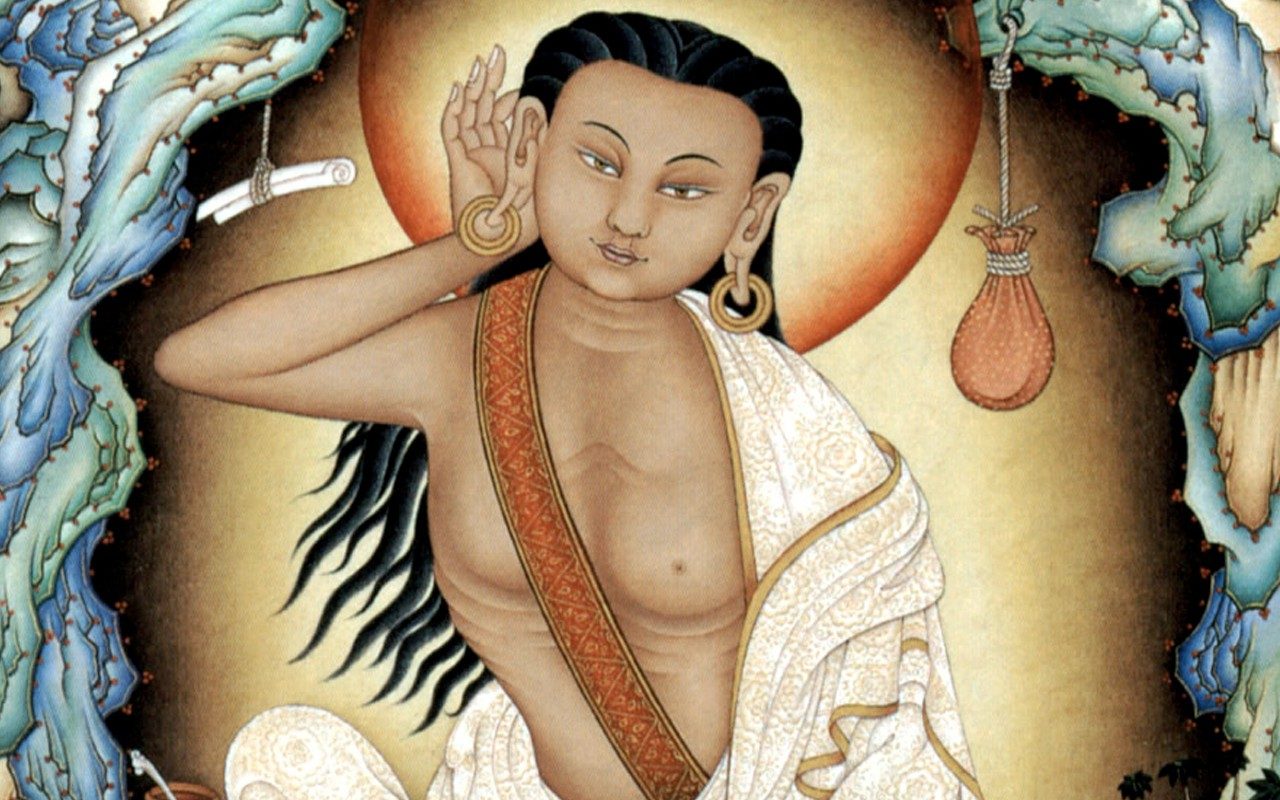
The Karma Kagyu Tradition
The Kagyu’s genealogy is attributed to Dorje Chang, the Adibuddha Vajradhara, who taught the Indian master Tilopa. He in turn introduced Naropa to his teachings.
The Tibetan Marpa (1012-1098) spurned on by his resolution to master the teachings sold all his worldly belongings for gold and headed to India where he received the Mahamudra teachings from his Indian teachers Naropa and Matripa. He studied, practiced and translated many teachings and attained enlightenment. In Tibet, at first under family-like conditions, he accepted disciples with Milarepa being the most outstanding.
Milarepa epitomised the perfect way of how to completely dedicate one’s life to seek enlightenment. He meditated in Himalayan caves according to his master Marpa’s instructions till he achieved Mahamudra, the full awareness of existence. He conveyed his experience to posterity in poetic and beautiful chants.
Milarepa had many disciples with Gampopa und Rechungpa being the most important. The monastic and yoga traditions of the Kagyupas are all traced back to them. Numerous monasteries were founded and in the wake of excellent teachers four big and eight smaller Kagyu schools developed.
One of the most important of Gampopa’s disciples was Dusum Kyenpa, the first Karmapa. According to an old prophecy he demonstrated the signs of full enlightenment and incarnated 17 times so far.
The Karmapa is the head of the Karma Kagyu school. The string of Lamas strongly connected to the Karmapa lineage has allowed for an uninterrupted transmission of teachings and the experiences inspired by them.
The intention of a Tibetan Buddhist School is, apart from its tradition, to combine the variety of traditional teachings and methods to a viable practice. This can consist of an approach based more on experience offering people with the most diverse dispositions the possibility to find a suitable path toward the implementation of Buddha’s teachings.
